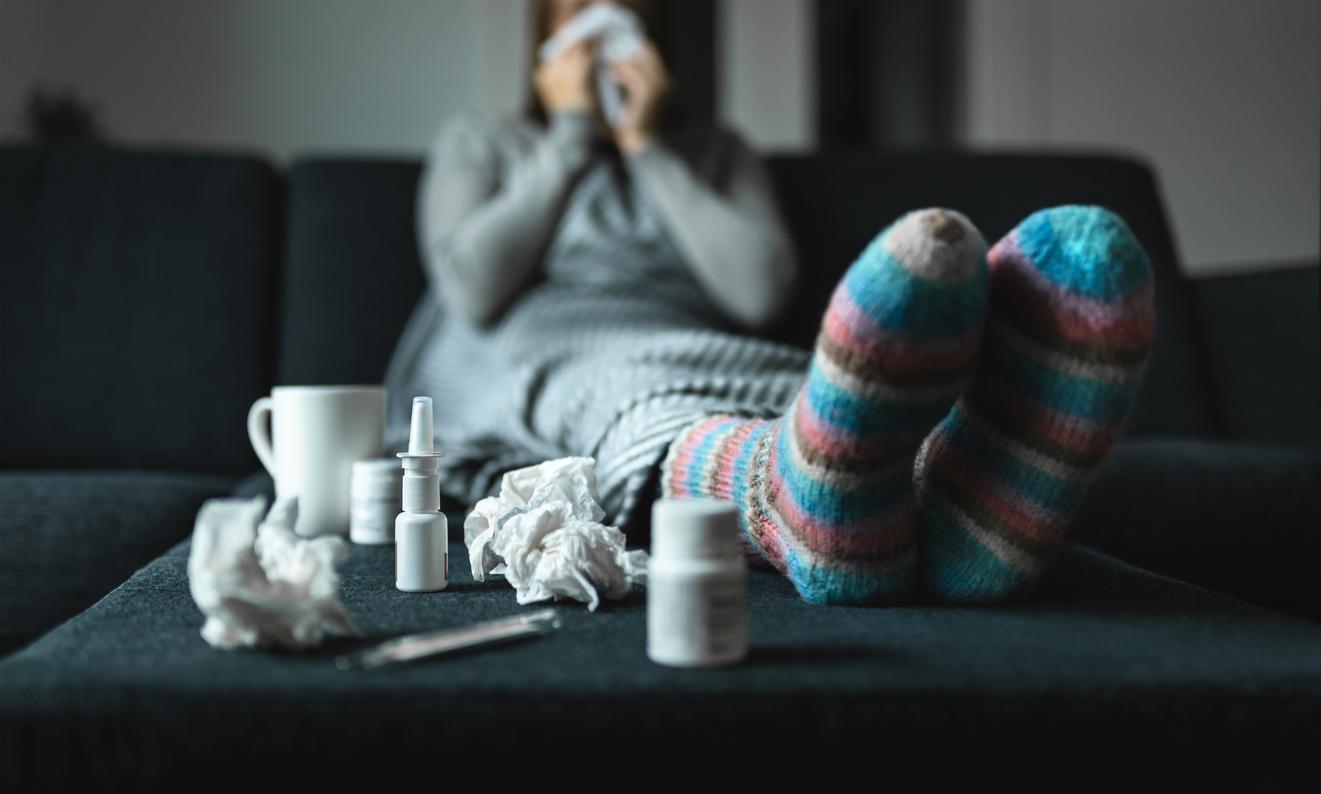The elderly are less susceptible
People over 60 will soon not only receive a call for the regular flu shot, but also for a vaccination against the Mexican flu. But there is more you need to know.
The elderly are probably less likely to get the swine flu than the young.
Anyone can get the swine flu. But it seems that people born before 1957 are slightly less affected by it. This is because the swine flu is somewhat similar in composition to the flu that was around at the time. Anyone who has had the flu before 1957 probably has certain antibodies in the body that also work against swine flu. People younger than 52 certainly do not have that resistance and are therefore more likely to get sick.
The consequences of the swine flu are more serious for the elderly.
Although the swine flu is slightly less common in people over 52, the consequences can be more serious for them. The swine flu is most severe if someone also has another serious condition, such as diabetes or heart or lung problems. This is more the case among the elderly than among the young.
Our grandchildren are the engine of the flu epidemic.
Young children are more at risk because they have less resistance to diseases. Their immune system is still relatively ‘blank’. Because they are often close to each other by nature, they also easily transfer the virus to each other. In this way, children are the ‘motor’ of the flu epidemic, as it were.
If someone close to you has swine flu, you do not have to avoid contact with your grandchildren as a precaution. There is a good chance that they will come into contact with the virus in other places, such as at school or at the sports club. If you become infected yourself, it is wise to keep contact with others to a minimum.
The ‘regular’, annual flu shot that all people over 60 can receive does NOT protect against swine flu.
The annual winter flu and swine flu are two completely different viruses, each requiring its own approach. That is why there is no single vaccine – a substance that stimulates the body to produce its own antibodies – for both types of flu.
If you get an annual flu shot, you must be vaccinated against the Mexican flu again this year. During the flu season, you are then as well protected as possible against both viruses. The flu shots offer no guarantees; even those who have been vaccinated can get the (swine) flu. In other words; no vaccine is 100 percent ‘flu proof’.
But the risk of serious illness is much smaller after vaccination. How much smaller exactly is still unclear. Because this is a new vaccine and because the virus continues to develop, it is impossible to say in advance how well it will work. To increase the effect of the vaccine against swine flu, you will be given two doses three weeks apart.
People over 60 are entitled to a ‘Mexican flu shot’.
The vaccination will be phased from the end of October. The groups that need him most will be vaccinated first. These are the people with a medical risk who are called up every year for the flu shot.
Healthcare workers also receive a call quickly, because they run a high risk of infection and can be a source for people who have a high risk of complications due to fragile health, such as the chronically ill. Family members and carers of a small group of people with a strongly increased risk are also eligible for the injection.
In addition, all healthy people over 60 can also expect a call. In total, this concerns five to six million Dutch people. There is a danger that the virus will become more aggressive or resistant to virus inhibitors in the autumn. In that case, more people will be vaccinated. Vaccination is not mandatory, however.
Most patients do not die from swine flu.
But the swine flu can be deadly, just like the normal winter flu. About eight hundred to a thousand people die from this every year. Usually these are patients with a weakened immune system as a result of other conditions. As a result, the body is less able to fight off the attack of the flu virus. Pneumonia can then develop, with serious breathing problems. Existing illnesses can also be exacerbated or disrupted by the flu.
According to the Health Council, the existing flu shot prevents about half of the number of flu cases and hospital admissions among the elderly. Also, the flu shot in the elderly significantly reduces the number of deaths from flu (28 to 50 percent).
People will certainly die from the Mexican flu in the Netherlands. That number may be higher than with the normal flu, because it is a new virus. It is impossible to predict how many patients will die. That depends, among other things, on how quickly the virus spreads, whether the virus-inhibiting drug oseltamivir (product name: Tamiflu) remains effective, and whether the flu vaccine arrives on time and is effective. But in the vast majority of cases, people simply recover from the flu on their own, including the swine flu.
Taking virus inhibitors as a precaution does not make sense.
Virus inhibitors are medicines that strongly inhibit the multiplication of the virus in the body. The best known is Tamiflu. The drug, which is only available on prescription, ensures that someone has a shorter and less severe flu, and is less contagious to others. Tamiflu does work preventively against the flu, but because you can use the drug for a maximum of six weeks, in the event of an epidemic, there is a good chance that you will still become infected after those six weeks. Tamiflu does not help build extra resistance to the flu; only a vaccine can do that.
Although virus inhibitors are not included in the basic health insurance package, they are reimbursed for people who have swine flu. There are enough virus inhibitors available in the Netherlands to treat everyone who needs them. That is also no reason to stock up on medicines through the general practitioner or the internet.
Washing your hands often protects better than a mouth cap.
Buy paper tissues, not face masks. Washing your hands several times a day – and drying them with a paper towel that you then throw away – is the best way to prevent contamination. Face masks only make sense if you use them consistently and replace them every few hours. In addition, the fit must be perfect to provide optimal protection. This is usually not the case with a cheap mouth cap from the do-it-yourself store.
It makes more sense to touch your mouth, nose and eyes as little as possible and to ventilate living and working areas well. The flu virus is transmitted through the air, through talking, sneezing, and coughing, or through hands or objects, such as a doorknob. Spread mainly takes place in areas where people sit close to each other and where there is poor ventilation. Do you have to cough or sneeze and don’t have a (paper) handkerchief to hand? Then do that in the hollow of your elbow instead of in your hand. Use paper tissues for blowing your nose and throw those away immediately.
Flu? Don’t go to the doctor, call.
The symptoms of the swine flu are the same as those of the regular flu: fever, chills, headache, muscle aches, fatigue and a dry cough. Sometimes there is also vomiting and
diarrhea at.
If you have such complaints and your temperature is higher than 38 degrees, do not go to the doctor, but contact him by phone. This prevents you from infecting other patients in the waiting room or infecting the doctor himself. The general practitioner will then assess whether a blood test should be done – only in a laboratory can it be demonstrated which virus causes the flu – and whether it is necessary to prescribe virus inhibitors.
The incubation period for flu, the period between being infected with the flu virus and the moment when the first symptoms appear, is two to five days. If you have contracted the Mexican flu, you are contagious from the day before the symptoms started, until five or six days afterwards.
Thanks to Jim van Steenbergen from RIVM and Aaldert Mellema from GGD Nederland.
Sources):
- Plus Magazine















